
Please install a more recent version of your browser.
19 July 2018
7 minutes read
Flanders DC is one of the partners of the European United Fashion project, whose goals are to stimulate entrepreneurial creativity and innovation and to facilitate business opportunities for European fashion labels. So, we set off for the Berlin Fashion Week with a group of designers from various European regions, set up a group stand at the PREMIUM trade fair and participated in various workshops, organised by the German Fashion Council. Tom Duhoux, founder of HNST (pronounced as 'honest'), a brand-new Antwerp-based label that launched its first collection of sustainable jeans in March, was the project’s delegate from Flanders. He compiled a report of his trip for our magazine. “Taking HNST to Berlin presented a perfect opportunity to become better acquainted with the German market.”
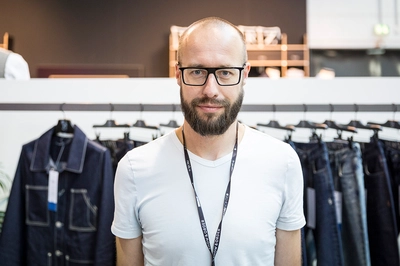
Tom Duhoux © Fashion Council Germany/Pascal Rohé
The HNST collection, comprising eight different models of jeans, not only emphasises your curves beautifully but is also made from old, recycled jeans by more than 50%. Not only that, the entire collection is produced transparently in the European Union and in accordance with the rules of the circular economy.
When hearing the term ‘sustainable denim’, most people will think of the Netherlands. Three Dutch brands — Kuyichi, MUD jeans and Kings of Indigo — were ranked among the top 5 most sustainable jeans brands according to Rank a Brand for a good reason, which is why I too was convinced that the most important market for our HNST jeans would be in the north. Nothing could be less true. The most important and biggest European market for sustainable denim is Germany. The call from Flanders DC to represent our brand at the Berlin Fashion Week within the framework of the United Fashion project presented a perfect opportunity to become better acquainted with the German market. The European United Fashion project aims to stimulate entrepreneurial creativity and innovation and to facilitate business opportunities for European fashion companies.
Together with eight other European designers I was given the opportunity to introduce our collection at the PREMIUM international trade fair and to participate in a diversity of inspiration sessions during FashionSustain and FashionTech, the two themes of the Berlin Fashion Week.
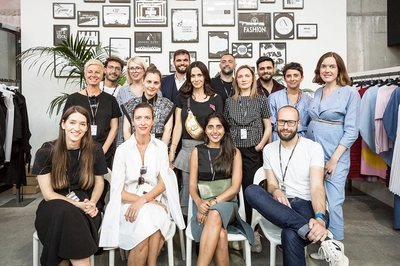
All partners of the United Fashion project and the designers from all the regions © Fashion Council Germany/Pascal Rohé
This was the first time I was present at a trade fair as an exhibitor. Considering that the pre-sale of our first collection was launched at our online shop at the end of March we haven’t had any experience with agents or shops yet. During a preparatory meeting with Ann Claes, who was sent by Flanders DC to attend the event in Berlin in the capacity of Senior Project Manager, I received all the input I would need for making order and line sheets.
One of the first challenges was to set a wholesale price that would allow me to retain my current sales prices.
We determine current sales prices by taking into account our cost structure as well as price positioning, in which we consciously chose to keep our jeans affordable when we launched the product. My goal for the trade fair was to obtain direct feedback about our background information, products and prices as they currently stand, with a view to gaining insight into our internationalisation potential. All the feedback we would receive would give us some valuable information to help us determine the right strategy for our brand after the trade fair.
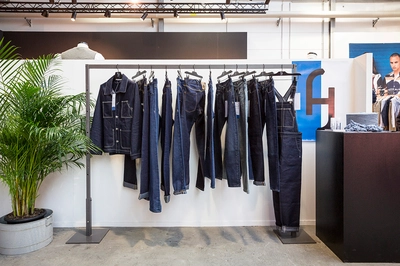
HNST © Fashion Council Germany/Pascal Rohé
So, what does the German market actually look like? What is most important to German B2C and B2B customers? The programme, which had been put together by the host of this first United Fashion meeting, Fashion Council Germany (FCG), had scheduled a market insights session that addressed these questions in detail. We learned, for instance, that when you are speaking about the ‘German market, you aren’t referring to only Germany but ’DACH’: Germany, Austria and Switzerland. This wealthy market represents almost 100 million people. In this rather conservative market people are interested above all in high-quality, functional clothing, but consumers are also looking for novelties. That makes the German consumer a little schizophrenic. The market for niche products has grown strongly in the past few years. Nevertheless, the typically eclectic style that people often associate with cities like Berlin is neither representative nor mainstream. Besides a few cities where this does appear to be the case, the biggest percentage of this market is more rural and provincial.
Generally speaking, there is a distinct demand for sound, well-made clothing, without any superfluous frills, although aesthetics is becoming more and more important.
Clothing also increasingly needs to have an outspoken and genuine sustainability component. The last two years have demonstrated a growing interest among German consumers in the origin of clothing as well. Because this consumer can often be suspicious and is wary of brands that profess to be green, German consumers also attach substantial value to certificates and labels. More than consumers in other markets. This was a key insight for me, because although we are not planning to do this ourselves, sustainability labels are apparently a requirement and self-evident in this market.
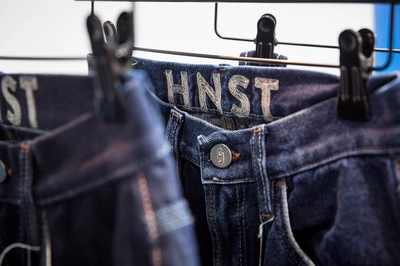
HNST © Fashion Council Germany/Pascal Rohé
With regard to B2B customers the principle applies that the product you supply must be of impeccable quality and fit, and it must be delivered punctually. If you do not satisfy both of these requirements, it will be very difficult to get a foot in the door in this market, now or in the future. Of course, the same applies the other way around.
If you make good-quality products and deliver them on time, things can go really quickly in this market.
Your reputation is of crucial importance, so you had better be well-prepared and organised if you want to do business in the DACH countries.
Another difference in comparison to other markets is the payment term. Although sending an invoice for 30% upon confirmation is normal in many other countries, this is a deal breaker in the DACH B2B market. In these countries, a payment term of 30 days following delivery is the standard, we were told. Although the rigorous payment conditions may make it appear otherwise, it is nevertheless possible to impose your own conditions in this market as soon as you notice an interest. The golden rule is to make no concessions to the conditions your brand needs to continue to operate in a healthy manner.
What was also very valuable was the one-on-one session we took part in after the plenary session about market insights. This session was given by an agent who has been successful in the DACH market for many years. She had carefully examined all the brands that were present and assessed the degree to which they were ripe for the German market. With regard to HNST we were told that our background information and product reflected current market demands and, if we were able to demonstrate that the fit is perfect, there was plenty of potential for us.
Two of the four days were dedicated to inspiration, in which we were given the opportunity to attend panel discussions, keynote speeches and workshops addressing two of the themes of the Berlin Fashion Week: FashionSustain and FashionTech. Sustainability, a not-to-be-overlooked theme on the German market as I said earlier, was particularly a topic of discussion in sessions that addressed chain transparency. In addition to this, it was good to hear that more and more parties are becoming aware of the fact that sustainable innovation should be approached holistically.
Every decision you make in terms of design has an impact on a specific aspect of the life cycle of your product.
Not only is the responsible sourcing of raw materials important these days, but also how we process these, which colourants and additives we use and the impact this produces on the usage phase or end-of-life and recycling phase.
I personally looked forward most to the session with Sebastien Kopp. The Frenchman who had co-founded the sustainable VEJA sneaker brand and who compensated his lack of relevant experience with a clear drive and vision has become a fixed value in the sustainable fashion landscape. Their fair production of the sneakers takes place in Brazil because this is also where the raw materials are sourced (natural rubber and cotton). One of their principles is that they do not spend any money on advertising, labels or certificates. This only costs money without necessarily creating any added value.
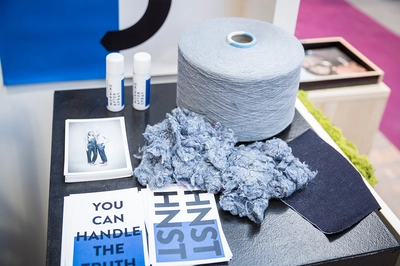
HNST © Fashion Council Germany/Pascal Rohé
Creating a fantastic consumer experience was the common thread running through the FashionTech part. How can technology help brands optimise this experience? I attended the workshop presented by the founder of Good Growth, James Hammersley.
He believes that technology is not the best solution — or always the best solution — for customer conversion.
We often concentrate far too hard on the wrong KPIs like the conversion ratio, while ’intention to buy’ is a much more important KPI to focus on. The intention to buy is often three times higher than the conversion ratio (up to 15%). By asking your customers three open-ended questions in your online shop — 1. Why are you here? 2. Was your visit successful? 3. If not: why? — you will gain all the relevant information that you, as an organisation, need to know in order to chart out your next steps.
The whirlwind programme left little time to man the stand at the PREMIUM trade fair. This was taken over by people who had been hired by FCG. Although I heard from other Belgian brands attending PREMIUM that it was exceptionally quiet in comparison to the January edition, several international parties had expressed genuine interest in HNST. I am still waiting to be sent the complete visitor’s report, but the positive response and the insights and points for attention I gained with regard to the German market have given me sufficient food for thought to further substantiate my own growth strategy. Our initial introduction left us hungry for more!
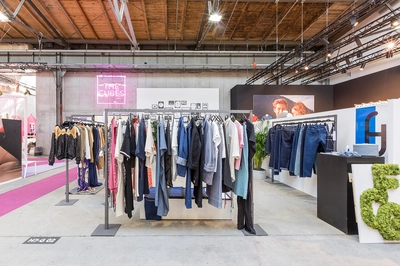
Stand PREMIUM © Fashion Council Germany/Pascal Rohé
Cookies saved